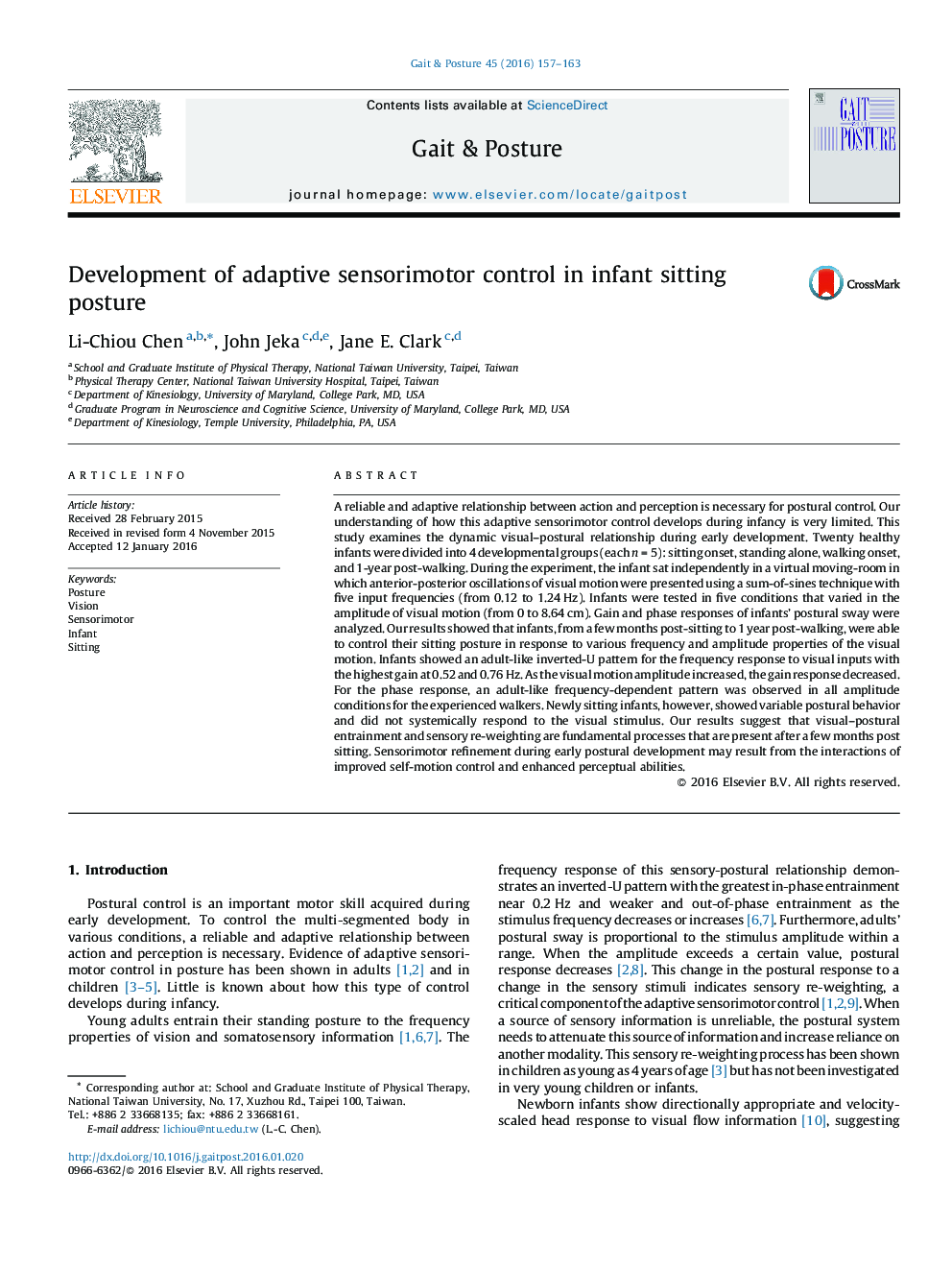| کد مقاله | کد نشریه | سال انتشار | مقاله انگلیسی | نسخه تمام متن |
|---|---|---|---|---|
| 4055998 | 1603850 | 2016 | 7 صفحه PDF | دانلود رایگان |
• Infants demonstrate an inverted-U pattern for visual-postural coupling.
• Sensory re-weighting in postural control exists a few months after sitting onset.
• Postural development involves improved self-motion control and perceptual ability.
A reliable and adaptive relationship between action and perception is necessary for postural control. Our understanding of how this adaptive sensorimotor control develops during infancy is very limited. This study examines the dynamic visual–postural relationship during early development. Twenty healthy infants were divided into 4 developmental groups (each n = 5): sitting onset, standing alone, walking onset, and 1-year post-walking. During the experiment, the infant sat independently in a virtual moving-room in which anterior-posterior oscillations of visual motion were presented using a sum-of-sines technique with five input frequencies (from 0.12 to 1.24 Hz). Infants were tested in five conditions that varied in the amplitude of visual motion (from 0 to 8.64 cm). Gain and phase responses of infants’ postural sway were analyzed. Our results showed that infants, from a few months post-sitting to 1 year post-walking, were able to control their sitting posture in response to various frequency and amplitude properties of the visual motion. Infants showed an adult-like inverted-U pattern for the frequency response to visual inputs with the highest gain at 0.52 and 0.76 Hz. As the visual motion amplitude increased, the gain response decreased. For the phase response, an adult-like frequency-dependent pattern was observed in all amplitude conditions for the experienced walkers. Newly sitting infants, however, showed variable postural behavior and did not systemically respond to the visual stimulus. Our results suggest that visual–postural entrainment and sensory re-weighting are fundamental processes that are present after a few months post sitting. Sensorimotor refinement during early postural development may result from the interactions of improved self-motion control and enhanced perceptual abilities.
Journal: Gait & Posture - Volume 45, March 2016, Pages 157–163
